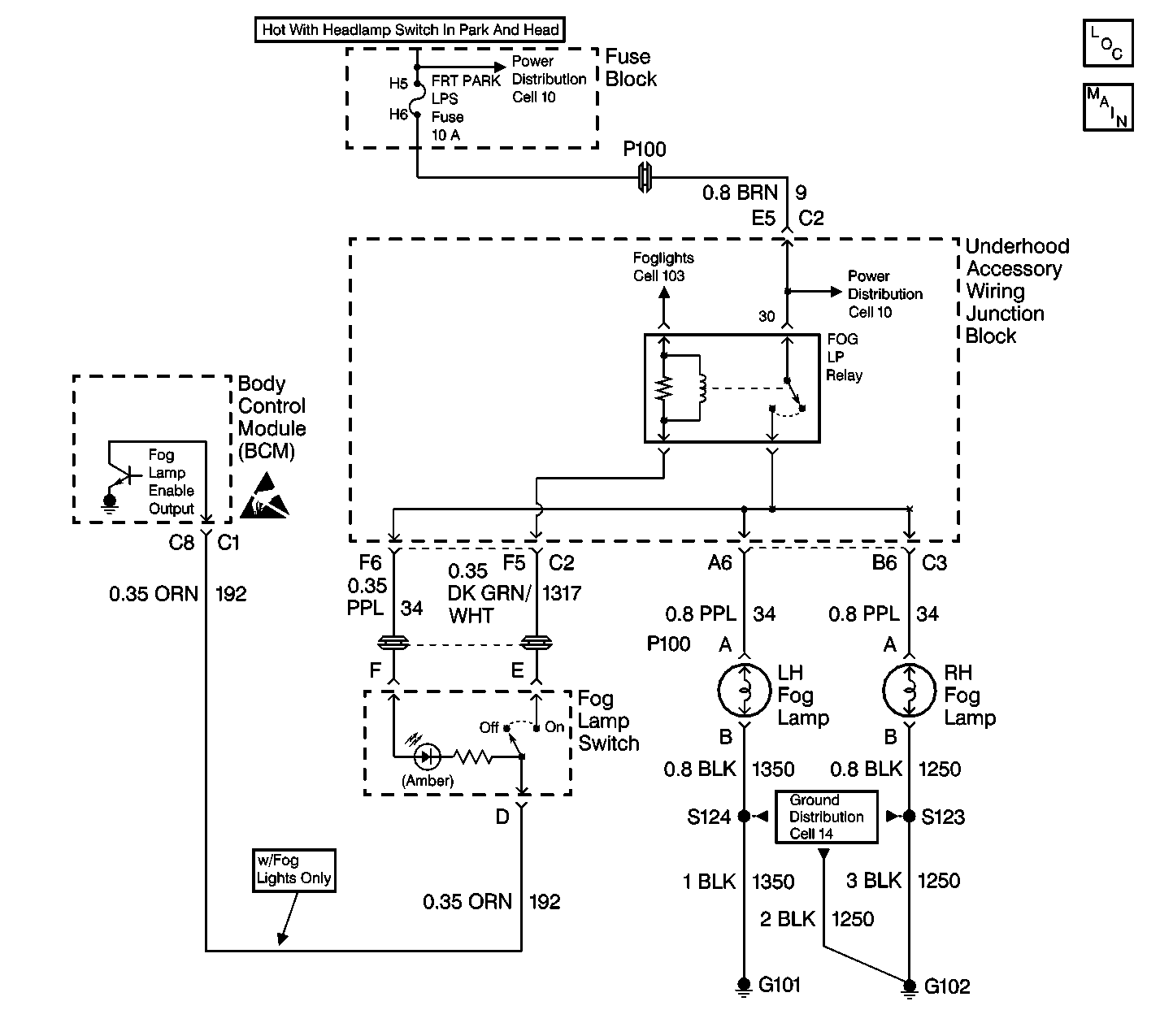DTC B2403 Front Fog Lamp Switch Circuit Circuit Shorted to B+

Circuit Description
When the ignition switch is on, the BCM provides a ground feed to the fog lamp switch through circuit 192. Turning the fog lamp switch to the ON position sends a ground signal from circuit 192 to circuit 1317, enabling the FOG LP relay.
Conditions for Setting the DTC
| • | The BCM detects a short to B+ in circuit 192 when the ignition switch is on. |
| • | The BCM detects a short to B+ in circuit 1317 when the ignition switch is on and the fog lamp switch is on. |
Action Taken When the DTC Sets
| • | The BCM stores DTC B2403 in memory. |
| • | The BCM turns off its output to the fog lamp relay. |
Conditions for Clearing the DTC
| • | Voltage is no longer detected by the BCM in circuit 192 when the ignition switch is cycled from off to on. |
| • | A history DTC will clear after 100 consecutive ignition cycles if the condition for the fault is no longer present. |
| • | An ignition cycle is needed to change the status of this DTC from current to history. |
| • | Using a scan tool. |
Diagnostic Aids
| • | The following conditions may cause an intermittent malfunction to occur: |
| - | An intermittent short to B+ in circuit 192. |
| - | An intermittent short to B+ in circuit 1317. |
| • | If the DTC is a history DTC, the problem may be intermittent. Try performing the tests shown while moving wiring and connectors, this can often cause the malfunction to reappear. |
| • | DTC P1626 will set in the Powertrain Control Module (PCM) when the ignition switch is on with the Body Control module (BCM) disconnected. When BCM diagnostics and repairs are completed, refer to Powertrain On Board Diagnostic (OBD) System Check (LX5) or Powertrain On Board Diagnostic (OBD) System Check (L36) in Engine Controls for additional information on PCM related DTCs. |
Test Description
The numbers below refer to the step numbers on the diagnostic table.
-
This step checks for a short to B+ in circuit 192.
-
This step determines whether circuit 192 has a short to B+ or the BCM is faulty.
-
This step checks for a short to B+ in circuit 1317.
-
This step determines whether circuit 1317 has a short to B+ or the FOG LP relay is faulty.
-
This step checks for a short to B+ in the fog lamp switch.
-
This step determines whether the short to B+ is in the underhood accessory wiring junction block or in circuit 1317.
Step 4 | Action | Value(s) | Yes | No |
|---|---|---|---|---|
1 | Was the BCM Diagnostic System Check performed? | -- | ||
Is the voltage measured within the specified range? | Less than 2V | |||
Is the voltage measured within the specified range? | Less than 2V | |||
Is the test lamp on? | -- | |||
Is the test light on? | -- | |||
Is the test lamp on? | -- | |||
Is the test lamp on? | -- | |||
8 |
Does BCM DTC B2403 reset as a current DTC? | -- | ||
9 | Repair a short to B+ in circuit 192 between the fog lamp switch connector terminal D and the BCM connector C1 terminal C8. Is the repair complete? | -- | -- | |
10 |
Is the repair complete? | -- | -- | |
11 | Replace the FOG LP relay. Is the repair complete? | -- | -- | |
12 | Replace the fog lamp switch. Refer to Instrument Panel Multifunction Switch Assembly Replacement in Instrument Panel, Gauges and Console for service procedure. Is the repair complete? | -- | -- | |
13 | Repair a short to B+ in circuit 1317. Is the repair complete? | -- | -- | |
14 | Replace the underhood accessory wiring junction block. Refer to Accessory Wiring Junction Block Replacement in Body Front End for service procedure. Is the repair complete? | -- | -- | |
15 | The malfunction is not present at this time. Refer to Diagnostic Aids for additional information regarding this DTC. | -- | -- | -- |
16 |
Are there any BCM current DTCs set? | -- | System OK |
